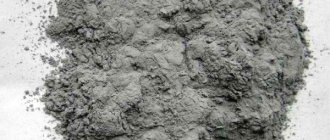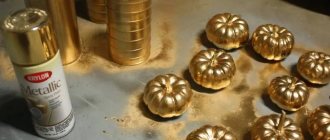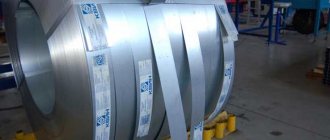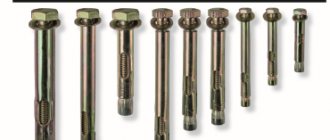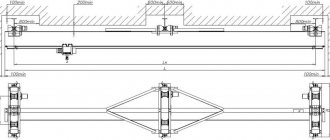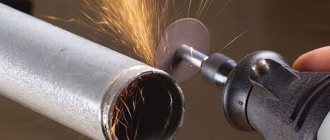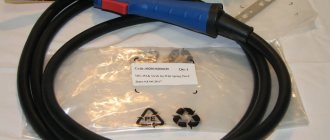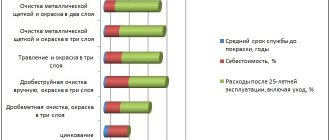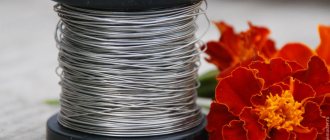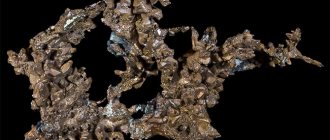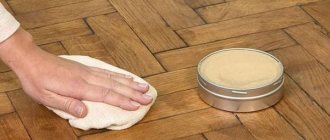Top 7 fireproof paints for metal up to 1000 degrees
To protect a heating radiator, metal stove or other objects from corrosion and aggressive external influences, they are coated with heat-resistant paint and varnish enamels.
The paint and varnish coating can withstand up to 1000 degrees C. Enamel not only protects, but also gives an aesthetic appearance. Making a choice in favor of one paint or another is difficult. A fresh coating will give the products a new appearance. We have compiled for you a rating of the most popular paint coatings. All submitted candidates have been verified by operational practice and experience.
Tikkurila termal silikonimaali
Country of origin: Finland and Russia. Used for painting metal products. Based on silicone resin. Suitable for indoor and outdoor use. Resistant to high temperatures up to 400 degrees. This property provides protection for chimney pipes and dampers. Used for painting car muffler. Black color. After drying, a semi-matte shine is formed. Protects the metal structure.
Apply with a brush or spray. Complete drying time at a temperature of +230 C is exactly 1 hour. You can use cleaning products to wash the surface after one month. One liter of enamel is designed for 16-20 square meters. If the paint is applied in one layer. The price corresponds to the quality. The only minus is heat treatment after application to ensure complete drying.
Celsite-600
Black paint. Withstands temperatures up to +600 degrees. High degree of protection when using metal under the influence of high temperatures and moisture. Resistant to the influence of petroleum products, oil, gasoline. Used for painting: electric motors, transformers, household heating appliances, bridges, tanks, metal structures, railway tanks, calipers. Can be applied to reinforced concrete, asbestos-cement, brick, plastered surfaces. The enamel is applied in three layers. The color is black, the surface acquires a matte tint.
Certa KO-85
Certa is used for items that operate at temperatures from -50 to 900 degrees C. Heat-resistant enamel. Tolerates temperature changes well, including high temperatures. Protects against aggressive environments and high levels of humidity. Prevents corrosion and moisture ingress. Apply at minus 30 degrees Celsius. Transparent paint material. Used instead of varnish to coat brick, concrete, and ceramics. Apply in three layers to achieve a matte finish. In one layer, the brick acquires a wet effect.
Elcon
To obtain the desired color it is mixed with colorant. At the same time, the pigment contained reduces the level of protection and durability of the painted coating.
The color palette is very rich. The gloss can be matte or glossy. A product painted in classic black can be heated up to 1000. And all other colors are not higher than 700 degrees. You can create beautiful patterns on the walls using a stencil without involving specialists. In addition to metal surfaces, it protects concrete, brick, and asbestos products from the influence of aggressive environments.
Kudo
The composition does not contain toxic components. When used, harmful substances are not released into the air. Can be used inside a living room, stove or fireplace, chimney. There is no need to apply a primer before application. Complete drying time 2 hours. It is considered slightly flammable and difficult to ignite. The room temperature is not lower than +3C. Service life is at least 20 years. Universal, can be used on products of different surfaces.
Dali
Matte paint for interior and exterior work. Used for painting car exhaust systems, chimneys, and chimneys. Black color. Before opening the can, the manufacturer recommends stirring the contents well. Apply by brush or spray. Drying time from 1 to 3 hours. If you want to apply several layers to the product, then the time interval for each layer is 1 hour. Thermal curing for 2 hours at 200 degrees.
Heat-resistant silver oxide Novbytkhim
Heat-resistant universal. Used for glass, brick, concrete, plaster surfaces. The resulting layer protects against oil, gasoline, water, and steam, salt fog in the range from – 50 to +600 degrees Celsius. Withstands sudden temperature changes, but within the range indicated on the package. The enamel is waterproof and dries quickly. Apply no more than three layers. Stir not only before application, but also during application. Pre-prepare the surface. Clean from dust and dirt. Contains organic substances.
EGO Metal varnish
Metal is a fairly durable material; many products and structures are made from it, too many to list.
We recommend: How to varnish laminate flooring
But even it needs protection, because under the influence of an external aggressive environment, the destructive process of corrosion begins in the metal.
The modern market offers us a lot of protective coatings for metal, including metal varnish. Therefore, let's talk about metal varnishes , their purpose, quality, types and functions.
Metal varnishes are distinguished by composition, purpose, method of application and use. The first and most important purpose of metal varnish is to protect against corrosive changes and extend the service life of metal products in different operating environments.
By the way, before considering the variety of these materials, one important feature of all varnishes : they can be applied to paint and metal . Those.
, if the metal surface has been previously painted with paint, it can be varnished without prior preparation.
Types of varnishes for metal
Bituminous varnish for metal. This is a relatively new type of varnish mixtures, produced on the basis of bitumen and polymer resins, which are mixed with organic additives and solvents. This material has excellent performance properties and has many positive qualities:
- Environmental safety of the mixture.
- Heat resistance.
- Weather resistance.
- Resistance to alkalis and acids.
- Antiseptic properties. Prevents the development of fungus and mold on the surface.
- High strength.
Polyurethane varnish for metal, can be transparent, matte, glossy. Consists mainly of modern polymers. It has excellent adhesive and anti-corrosion properties. It can be used for both internal and external metal surfaces. It is easy to apply, does not smear, and dries quickly. Let's consider its main parameters:
- Good adhesion.
- Wear resistance.
- Heat resistance. Withstands temperatures up to +80°C.
- Forms a strong, elastic, stable coating.
- Weather resistance.
- Increases the service life of a metal product by at least 10 years.
Alkyd varnish for metal. Produced on the basis of polymers and alkyd resins. Effectively protects the metal surface from corrosion and adds shine to surfaces. It is also classified as a polymer varnish for metal due to its composition. Main parameters:
- After application the material becomes durable.
- The coating is resistant to household chemicals, acids, alkalis, and alcohols.
- Heat resistance.
- Wear resistance.
- High adhesion.
- Resistance to mechanical stress.
- The use of alkyd varnish is possible for interior and exterior work.
Epoxy varnish for metal is made on the basis of epoxy resins and organic solvents. Applied to a metal surface, it reliably protects against corrosive changes and mechanical damage. Main characteristics of epoxy varnish:
- Frost resistance.
- Wear resistance.
- Good adhesion.
- Resistance to thermal influences.
- High anti-corrosion.
So we got acquainted with the types of varnishes. But this is just the tip of the iceberg when choosing this effective metal coating. The next step will be to get acquainted with specific brands that are in great demand today, both among household consumers and among professionals.
Metal protection varnishes
"KO-075" . Heat-resistant varnish for metal. It is a solution of organosilicon resin in toluene or xylene with the introduction of a modifying additive. Protects the surface from corrosion.
We recommend: 14 tips on how to choose wood varnish for interior and exterior use: types of varnishes
Suitable for painting parts and equipment whose temperature reaches 400-500°C. Has high adhesion. Refers to transparent varnishes for metal .
Suitable for painting car parts, radiators, and for the inner surface of steam-water tanks that operate at temperatures not exceeding 160°C. Easy to apply and dries quickly.
"KO-85" . Varnish for a wide range of applications:
– used in the manufacture of heat-resistant enamel “KO-814”;
– for the protection of metal, wood, concrete, glass, ceramic surfaces;
– as modifying additives in alkyd and acrylic paints and varnishes to reduce drying time and increase weather resistance.
Suitable for painting metal products that are exposed to temperatures up to 400°C for a long time. . The material is easy to apply: it can be applied by roller, brush, air spray, or dipping. Well protects the painted surface from exposure to aggressive environments and protects against corrosion for a long time.
"KO-815" . The varnish is a mixture of modified organosilicon resins in aromatic solvents. "KO-815" is intended for painting metal, concrete, ceramic products for protection against corrosion.
It is a frost-resistant varnish, which is a big advantage compared to other varnishes; it can withstand temperatures from -50°C to 500°C.
Almost any metal products that are used under negative environmental influences can be painted.
"CERTALAC universal 7 in 1" . This supervarnish provides 7 degrees of protection. Used for painting metal, concrete, reinforced concrete and ceramic surfaces.
Provides high adhesion and reliable protection against corrosive changes, protects against fungi and mold. Refers to waterproof, anti-corrosion varnishes.
Withstands temperatures up to +300°C.
"BT-577" . It is a solution of bitumen in an organic solvent with the introduction of modifying additives and driers. Reliably protects metal surfaces from corrosive changes when used in temperate climates. When applied it forms a glossy finish.
Also among other high-quality varnishes against metal corrosion, there should be “HSK-2467”, “KO-921”, “KO-835”. All varnishes provide good protection against metal corrosion and significantly extend the life of the metal product.
Buy metal varnish
Now that we've made a brief overview and figured out which metal varnish for exterior or interior use might be useful to you, are you ready to make a purchase? Or do you still need specialist help? will help you in both the first and second cases.
What do we offer to our clients? Having 20 years of experience behind us, we have learned the most important thing - to save the client’s time and money. All you need is to call us at the phone number indicated on the website and order the required product. If necessary, we will provide you with comprehensive advice about the product and help you make a choice.
We complete turnkey applications using a minimum of your time. All you need is to choose the required varnish, decide on its quantity and order it from us, paying for the purchase. Then, promptly, we send the required goods to the specified address.
find prices for metal varnish on our website, look at the discounts and promotions that we always provide to our customers. Call us and order metal varnishes from Ego LLC.
Recommendations for purchasing varnish
The quality of the varnished coating depends largely on the quality of the base. To obtain positive results, it needs preparation. First of all, the working base is subjected to grinding using a special tool - a grinder.
It allows you to remove burrs, traces of rust and other defects. After using the sander, clean the surface from dust and sand it additionally with sandpaper. Coarse grain paper is used first and then fine grain paper. Sanding with sandpaper should be carried out along the surface, this will avoid the appearance of noticeable scratches.
In the next video, watch a review of the universal varnish “Tsapon”.
Carefully look at the photo of bitumen varnish. Remember what the solution looks like externally, what container it is sold in, what packaging by weight exists. This will help you navigate the store. Read the instructions on the product label.
Application in decoupage
The decoupage effect is used to give an aged look to products, which will look appropriate in a certain interior style. Decoupage gives the product expressiveness and relief, an original look. You can get the desired result by darkening the pits and highlighting the bulges. The designer also makes small cracks on the surface.
For aging, bitumen varnish is usually used. It is applied with a small brush, then with a rag or foam sponge, drips and excess are removed, and wiped until the coating dries. At the same time, darkening and highlighting are adjusted in individual areas. Also, after complete drying, they give the final look to the decor by wiping the desired areas with white spirit to brighten. Excess is removed using a solvent.
If the surface is wooden, then the varnish penetrates into the cracks, emphasizing the structure of the wood. It is used to decorate stucco moldings, furniture, and bas-reliefs.
The basis of bitumen varnish and its varieties
The binding component underlying the bitumen varnish is natural petroleum bitumen. We know bitumen as a solid substance that is black or one of its shades. Natural bitumen can be in a solid or fluid state depending on the ambient temperature.
At temperatures above 100 degrees, bitumen melts and turns into a liquid state. In this way, asphalt concrete mixtures are produced.
Bitumen, which are used to obtain varnishes, can be classified as follows:
- natural asphaltites. Quality characteristics vary slightly depending on the place of origin;
- artificial. The technological process for producing light and heavy petroleum products involves oil distillation. A by-product of distillation is bitumen;
- coal. In the technological process of coke production, coal is distilled. The residual product in this case is coal tar pitches.
When producing varnishes, organic solvents, corrosion inhibitors, and antiseptics are added to petroleum bitumen to obtain the required paint viscosity.
Depending on the composition of the components, bitumen paints are divided as follows:
- containing oils. In turn, they are: bitumen-oil and bitumen-resin-oil. Bituminous paints contain rosin and glypthal additives. Depending on the mass fraction of oils, there are very fatty, medium fatty and low-fat varnishes;
- containing no oils. Solutions of natural bitumen and organic solvent, in which the presence of rosin in the additives is allowed;
- based on coal. Varieties of compounds of pitches of coal, peat, wood.
Cost and expense
The bitumen composition BT-577 is produced by various companies, Novbytkhim, Kuzbasslak and others. Before buying this product, you need to correctly calculate the volume of this composition, taking into account the consumption per square meter. In most cases, the consumption of BT-577 varnish per 1 m2 is about 150 grams, with a single layer application. The manufacturer indicates in the instructions that it is necessary to apply the composition in two layers.
The stores sell the bitumen composition BT-577 in containers of different sizes, from 0.5 kg to 50 kg. The price of a half-liter container ranges from 40 to 60 rubles, depending on the manufacturer. A container with a volume of 1 liter costs 80-130 rubles. Price 5 liters – about 520 rubles. The larger the container volume, the lower the cost of 1 liter of mixture. 50 kilograms of the composition costs 3500-4000 rubles.
Specifications
Conditional viscosity according to the viscometer VZ-±2 °С, sec…………………………………………………………………………………………………………………… ………………………………………………………… 18-35
Mass fraction of non-volatile substances, % …………………………………………………………………………………………………………………… ………………………………………… 39±2
Drying time level 3:
— at 20±2 °С, hour, no more than …………………………………………………………………………………………………………………… ………………………………………………………… 24
— at 100-110 °C, min, no more than …………………………………………………………………………………………………………………… ………………………………………………………… 20
Film hardness according to the pendulum device M-3, conventional units, not less than ………………………………………………………………………………………………………………… ………………………………………………………………………………… 0.20
Elasticity of the film when bending, mm, no more than …………………………………………………………………………………………………………… ………………………………………………… 1
Resistance of the film to the static effects of water at 20±2 °C, h, not less than ……………………………………………………………………………………… ………………………………………………………………………………… 48
Film resistance to static action of 3% NaCl solution at 20±2 °C, h, not less than ………………………………………………………………………………………… ………………………………………………………………………………… 3
Certification
Sanitary and epidemiological conclusion No. 12.RTs.11.231.M.000386.07.02 from to.
When carrying out painting work, as well as after its completion, it is necessary to thoroughly ventilate the room.
Use rubber gloves to protect your hands. Avoid contact with respiratory and digestive organs.
If varnish gets on your skin, wash it with warm water and soap.
Keep away from children! Keep away from fire!
Storage
Varnish BT-577 must be stored in a dry, unheated room, in a tightly closed container.
The varnish should be stored in a tightly closed container, away from electrical appliances, food products, and in places inaccessible to children.
Protect from moisture and direct sunlight.
Advantages of aerosol varnishes
Such compositions are immediately ready for use. It doesn’t matter which manufacturer’s varnish you use, Plastik from Cramolin, Kudo Ku compositions or other brands, they all have the following advantages:
- Such compositions are immediately ready for use. They do not need to be diluted or mixed. Also, you will not need rollers, brushes and other auxiliary tools that will have to be cleaned after use. Thus, the spray varnish is highly mobile. You will save money on purchasing additional tools and solvents. And thanks to the convenient volume of 200-400 ml, the varnish can be used even in field conditions.
- As a rule, the can indicates how long the varnish takes to dry. Typically this time is several minutes. Due to the fact that the composition dries so quickly, smudges do not have time to form on surfaces made of plastic, steel or wood.
- Such compositions can be used not only on products made of different materials (plastic, wood, steel), but also on planes of different shapes. The surface may be flat, curved, open, or difficult to reach.
- Even beginners can use Plastik spray varnish or another variety. No special knowledge or experience is needed. If you are wondering how much varnish you will need, then we can confidently say that its consumption will be minimal. In this case, you will get a uniform, continuous layer without smudges.
- Any aerosol varnish (universal, matte or glossy) has excellent physical and chemical characteristics. All of them are resistant to steam, moisture, high temperatures, various aggressive substances and detergents. In addition, surfaces made of steel, plastic, ceramics or wood will be reliably protected from mechanical stress, fading in the sun, and temperature changes. At the same time, depending on the type of varnish, you will get a matte or glossy effect.
- Thanks to the transparency of the varnish, you will retain the original color of the surface made of wood, plastic, glass, cardboard or steel.
- Reasonable price for a small volume (200 ml or 400 ml). As a rule, liquid varnishes are sold in large containers, so for small areas it will be more economical to buy aerosol formulations.
Types of metal varnishes and their characteristics
Metal is a strong and durable material. But over time, even such a foundation can deteriorate. Deterioration ahead of time is the result of standard physical and chemical influences. Therefore, it is recommended to take additional measures to protect the surface. For example, use metal varnish.
Types of varnishes
There are many options for varnishes that allow you to protect metal substrates from the environment. Let's take a closer look at the varieties produced.
Bituminous
This metal varnish appeared on the market not so long ago. The production uses a special grade of bitumen mixed with polymer resins. In addition, the composition necessarily contains additives, as well as organic solvents. The operational and physical-mechanical properties of this composition are not satisfactory. The material is suitable not only for metal, but also wood and stone.
When applied, a black protective film is formed on the surface. It is resistant to mechanical damage. But even the manufacturers themselves suggest using this solution only temporarily. For example, while polished products are stored or transported.
Among the characteristics that metal varnish has, it is worth noting the following:
- metal varnish is primarily an antiseptic;
- resistance to acids, alkalis;
- weather resistance;
- heat resistance;
- elasticity and strength;
- the structure of the composition has pores, which contribute to increased frost resistance;
- environmental Safety.
The price of the composition is low, which cannot be said about the quality. The demand for materials in this category is increasing, which is why buyers often say that “I polish with this material.”
Polyurethane
There are transparent, matte, glossy options. Available in black and other colors. The substance is made from polymers, in particular polyurethane. The performance characteristics will pleasantly surprise buyers. An excellent option that can become a high-quality finishing coating for the internal surfaces of metal tanks.
A situation where polyurethane varnish is used in everyday life is acceptable. It doesn’t matter whether we are talking about interior or exterior finishing work. The aerosol is easy to apply and dries quickly, does not contribute to the formation of smudges.
Product certification
All varnishes can be divided into several large groups according to the type of solvents they contain: oil, turpentine and alcohol. Each has its own functions and properties.
In our country, the presence of a certificate of conformity for varnish is advisory in nature. It is required only in rare cases. But all paint and varnish materials must have a declaration of conformity. How are they different? According to the certificate of conformity, responsibility for the information falls on both the certification body and the declarant. Only the certification body is responsible for the declaration.
For bitumen varnish, it is not necessary to issue a certificate of conformity for its release for sale in the Russian Federation. But this document is necessary if the products participate in government tenders and transactions. It increases the competitiveness of varnish in the market. State certification centers conduct tests in laboratories, on the basis of which a certificate is issued. The document must be completed in advance.
Using quick-drying primers
Practice shows that the use of quick-drying mixtures before applying enamels and paints minimizes the likelihood of surface damage. This occurs thanks to a number of protective measures against negative environmental influences.
There is a special type of composition that helps get rid of rust due to the components included in the mixture. These properties are used when working with metal structures that have been exposed to corrosion. Treating their surfaces with a primer will significantly extend their service life.
Quick-drying mixtures for priming car body parts are considered a narrow-purpose product. On sale you can also find universal primers that are used to restore metal that has been subjected to corrosion, as well as parts untouched by it. Such compositions are also used for forged products and cast structures, the surface of which has a slight roughness.
Quick-drying compounds are used:
- in mechanical engineering;
- in construction and finishing works;
- in shipbuilding;
- in the production of equipment.
Before starting work, it is important to make sure that the primer composition is universal. If you neglect this rule, then some types of metals may react with the components of the mixture
As a result, adhesive properties will be reduced.
Characteristics of primer mixture for metal
The soil mixture is used both in large-scale production and at home. This is a solution used to combat corrosion phenomena and level out minor errors on the product. The film formed by the primer is resistant to temperature changes and high humidity.
There are several types of primers and each of them has its own consumption parameters per unit surface area.
This solution is always applied before applying the topcoat to ensure the result is of high quality. The advantages of treating the product with a primer mixture before painting:
- The finishing layer will adhere much more firmly and there will be no need to repaint the surface in the near future. In cases where the application of the primer mixture is neglected, the paint begins to peel, fall off and the process will quickly have to be repeated again.
- Corrosion protection prevents the formation of rusty areas on the surface.
- Significant savings in paint and varnish materials.
If, during repairs or final work, you apply a primer coat in a short period of extra time before painting, this will save both money and time. The next repair will need to be carried out much later.
Options for primer mixtures for metal
There are several common processing solutions that help facilitate final processing of the product and improve its performance:
- Alkyd primers are a very common option and are used most often. It consists of an alkyd composition in the base, with the use of various stabilizing substances and additives. The color of the coating is gray or brown. It is highly durable and dries quickly. Also contains: red lead, whitewash and other components. Compatible with almost any type of final coating.
- Products consisting mostly of orthophosphoric acid. It is used for surface types that are already slightly affected by corrosion. The solution helps restore the material and free it from rust. Phosphorus primers stop all oxidative processes and, as a result, strengthen the product. When using such products, it is imperative to remove rust from the surface being treated.
- Acrylic, water-dispersed options are used indoors, increase adhesion, and level the surface. This composition dries quickly and is suitable for coating iron surfaces and alloys of non-ferrous metals.
- Inhibiting primer. This composition does not form a general film over the product, but penetrates directly into the surface at the molecular level. As a result, some properties of the material change, it becomes denser and harder. When processed, they combine the properties of the primer mixture itself and the enameled surface. Every day such coatings for various metal surfaces are becoming more and more in demand.
- Protective. This product contains magnesium and zinc. The higher the content of powders in this mixture, the higher quality it is considered. Particularly popular are compounds that contain red lead. Thanks to these components, the metal surface hardens and even the smallest scratches do not form on it. Ideal for those structures and products that have frequent contact with fresh and sea water.
- Converter. A variant of a mixture that is mixed with a corrosive coating. As a result, the structure of these stains becomes more porous and can be easily removed from the metal surface. Therefore, at the beginning of work on such material, it is not necessary to clean off rusty areas from the surface. Therefore, transformative compounds are an option for the lazy.
- Insulating mixtures. In this version, the base is a neutral pigment. But the primer itself has a short shelf life.
Each subtype of soil mixture has its own characteristics, which should be clarified when selecting. It must be suitable for the type of metal that is supposed to be processed.
The optimal characteristics for a standard metal primer are:
- semi-gloss or matte type of film;
- the period during which the mixture dries should be no more than 12 hours;
- elasticity parameters of the finished film without taking into account bending - no more than 1;
- conditional viscosity parameters more than 45.
This primer will significantly increase the service life of the metal surface and paintwork.
Metal varnishes and their existing varieties
Metal varnishes and their types
You can protect metal products from rapid deterioration using various means, such as bitumen, oil paint or special varnishes for metal. The latter, by the way, are very popular because they not only have excellent performance properties, but also allow you to paint the surface in the desired color.
Metal varnishes come in various types and compositions, so before choosing any specific product, you should at least superficially understand its properties.
Types of varnishes for metal
Metal varnishes can be:
- Bituminous;
- Polyurethane;
- Acrylics;
- Alkyd.
There is also a type of metal varnish called oven varnish, but it is used for narrowly targeted purposes, where heat resistance is needed.
Bituminous varnishes for metal
This type of varnish is made from bitumen, with the addition of polymer resins, some additives and organic solvents. Bitumen varnish for metal can be used to treat not only metal surfaces, but also stone and wooden substrates.
The properties of bitumen varnish for metal are as follows:
- In resistance to alkalis and acids;
- In a fairly high layer strength;
- In heat resistance and frost resistance.
Having a relatively low cost, bitumen varnish is of decent quality, so it is widely used today to protect all kinds of metal products and more.
Acrylic varnishes for metal
Acrylic varnish for metal can be used to protect products made from both ferrous and non-ferrous alloys. Their main advantages are not only heat resistance, but also decent anti-corrosion properties, which significantly extends the service life of metal structures.
We recommend: How to choose wood varnish?
Acrylic varnishes for metal dry quickly enough, while forming a durable and waterproof film on the surface for protection. For this reason, these paint and varnish compositions are recommended for use in places where high humidity is always present.
The main characteristics of acrylic varnishes for metal include:
- Good adhesion to treated surfaces;
- Excellent anti-corrosion properties;
- Resistance to various chemicals, including oils and salts;
- Heat resistance;
- Moisture resistance.
It is best to apply acrylic varnishes to surfaces using a sprayer. It is also possible to process metal products with this type of varnish and a regular paint brush.
Polyurethane varnishes for metal
Polyurethane varnishes are made from various polymers. There are matte, glossy and transparent (colorless) varnishes for metal. Their main purpose is to protect surfaces from the harmful effects of moisture.
Often this type of paint and varnish composition also serves as a finishing coating for many products, including for internal processing. All polyurethane varnishes for metal have a durable and very elastic coating that is not afraid of strong temperature changes.
Also, polyurethane varnishes have such worthy characteristics as:
- Complete chemical inertness;
- Weather resistance;
- Moisture resistance;
- Long service life, not less than 10 years;
- High degree of wear resistance.
Polyurethane varnishes for metal can be used for both interior and exterior decoration. They dry quickly and are easy to apply to a metal surface, without any smudges.
Alkyd varnishes for metal
Another fairly popular type of metal varnish is alkyd paint and varnish composition. It is made from polymers, and alkyd resins are used as the basis for its production. The peculiarity of these metal varnishes is that after application to the surface being treated, they form a beautiful varnished shine on it.
Of the main characteristics of alkyd varnishes for metal, I would especially like to highlight the following:
- After applying alkyd varnish to the surface, a very durable and reliable coating is formed;
- This type of varnish is moisture-resistant and heat-resistant;
- It is poorly susceptible to mechanical abrasion, as well as any other influence in this regard.
In addition, all alkyd varnishes for metal have a high degree of adhesion to a wide variety of surfaces. They can be used both outside and indoors.
Varieties
Spray varnish can serve different purposes depending on its type. Spray varnish can serve different purposes depending on its type:
Gloss varnish acrylic-based floor varnish
- Tinting varnish compositions are suitable for processing automobile bodies, individual components and parts. For example, such a mixture is suitable for tinting headlights or other parts made of glass or plastic. As a rule, tinting varnish helps protect parts from weather factors, mechanical influences and aggressive chemicals. In addition, it improves the aesthetic qualities of the car, creating the effect of novelty and shine. Also, the tinting spray perfectly protects wooden surfaces after restoration.
- Reflective compounds in cylinders contain special particles that, in addition to a glossy shine, allow the surface to reflect light in the dark. That is why such compositions are usually used to coat parts on cars, road signs and other accessories of bicycles, helmets, etc. Such varnishes are suitable for surfaces made of steel, glass, plastic, and wood. In turn, these mixtures are divided into several subtypes depending on the special effects they can create:
- sparkle of diamonds. Such compositions give the surface incredible shine, volume and depth;
- chameleon. This coating can change its hue at different viewing angles and lighting;
- starry sky effect. This composition contains multi-colored microparticles that create a diffused glow on the surface.
- Polyurethane varnish compositions. These mixtures, like Plastik acrylic varnishes from Cramolin, are designed to protect surfaces from mechanical stress, moisture, scratches, mold, and high temperatures. They are used for products made of plastic, wood, and metal. To increase the protective effect, it is recommended to apply the composition in several layers (3-4). In this case, each previous layer must dry completely, so take into account how long the varnish you choose dries. On wooden surfaces, such a varnish only emphasizes the texture of the wood and gives the product shine.
Details
Varieties and release form
On the modern market of finishing materials there are a large number of varnish compositions that differ in properties and composition, which can be used to protect metal surfaces. The classification of mixtures will look like this:
Varnish composition "Tsapon".- Thermally stable solutions for fireplaces and stoves.
- Alkyd mixtures.
- Acrylic based varnish composition.
- Polyurethane based coating.
- "Kuzbasslak" or bitumen varnish composition.
Paints and varnishes for metal are most often produced in the form of a transparent solution. But there are colored and black mixtures, and certain types of colorless products can add pigments. In addition to shade, paints and varnishes differ in the level of gloss of the created coating:
- High gloss.
- Semi-glossy.
- Glossy shiny finish.
- Semi-matte.
- Matte.
Please note that the type of release differs between one-component and two-component products. The first mixtures are immediately ready for application, and such varnishes are not the most popular, because the quality is two-component compositions.
Such mixtures are divided into a hardener and a base. To prepare the solution, the components must be mixed with each other, and this must be done immediately before starting repair work.
"Kuzbasslak"
This varnish composition is made on the basis of artificial or natural bitumen. In order to improve the technical characteristics of the coating, special additives are used in the production of the mixture. After such a metal varnish for exterior use has dried, a durable film is formed on the metal surface, which will protect the structure from mechanical influences. Bituminous varnish composition can be used in the process of metal etching, and those areas that are not subject to etching should be coated with Kuzbasslak. The resulting film will reliably protect the treated surface from exposure to chemicals. Bitumen mixtures can be divided into several more subtypes, which differ in certain components contained in the composition. Certain characteristics of solutions may differ depending on the composition. All types of bitumen solutions have the following positive qualities:
- High level of protection against moisture.
- Excellent anti-corrosion characteristics.
- Low cost.
- The mixture will create a very durable coating.
- Firmness and elasticity.
- Resistant to temperature changes.
Consider the following type of varnish.
Polyurethane
Such varnish compositions are often used to create a reliable protective coating for the inside of various tanks and metal containers. This material can also be used for finishing metal structures indoors and outdoors. Among the advantages of the mixture, we highlight the following qualities:
- Reliable corrosion protection.
- Excellent wear resistance.
- High degree of adhesion.
- Increases the service life of metal structures.
- High degree of strength of the created coating.
- Resistance to aggressive environments.
- Withstands a wide temperature range - from -60 degrees to +86 degrees.
A colorless polyurethane-based mixture can be combined with coloring agents to obtain the desired shade. This coating is often used as a final finish.
Acrylic based
Acrylic mixtures cannot be inferior in quality to other paints and varnishes for metal. One of the distinctive features of acrylic-type compositions is the high drying speed of coatings. After drying, the varnish will form a very durable waterproof film on metal structures. Due to these properties, the mixture is ideal for processing metal products that are operated in conditions of high humidity or even often come into contact with moisture. Acrylic varnish composition has excellent advantages:
Fireproof.- Resistant to mechanical impacts.
- Strengthens the surface and increases the service life of metal products.
- The material contains no toxic substances.
- Excellent adhesion performance.
- Protects metal structures from the effects of aggressive environmental factors.
- Resistant to oils and salts, which is why it is often used for car coatings.
- Prevents the formation of corrosion.
Let's talk about several more types of varnish compositions.
Alkyd
A shiny, durable coating on the surface is formed by alkyd varnishes for metal. This solution is made on the basis of alkyd resins with the addition of various additives, and the form of release will depend on the manufacturer of the material. On the construction market you can find alkyd varnish composition in the form of an aerosol can or in a simple jar.
Let us highlight the following advantages of this coating:
- After the paint and varnish material dries, a protective, high-strength film is formed on the surface.
- Resistant to household chemicals and other aggressive substances.
- Suitable for construction work both indoors and outdoors.
- Water resistant.
- Thermally stable.
- Has high adhesion rates with a large number of materials.
Let's look at a couple more types of products.
Heat resistant
This mixture for fireplaces and stoves can withstand high temperatures (more than +250 degrees). This mixture is often used as an additive to alkyd varnishes, as well as acrylic-based solutions. Oven varnish composition helps create a reliable anti-corrosion coating for protection.
Varnish composition "Tsapon"
This mixture is one of the varieties of nitro varnish. The solution will not only create a durable and protective coating, but also decorate the surface, since pigments can be added to its composition. When certain coloring agents are added, the consistency of the varnish may become thicker and also resemble a liquid gel. This type of nitro varnish can be used to prime a metal surface. This product prevents the formation of rust and perfectly protects the surface from damage.
Types of varnishes for metal
Let's look at the most popular types of varnishes for metal processing.
Bitumen varnish
Since we have already mentioned bitumen, let's start with it. This is a relatively new type of varnish mixtures. It is produced on the basis of a special grade of bitumen and polymer resins mixed with organic solvents and additives. It has excellent physical, mechanical and operational properties. Designed to protect the surface of metals, stone, wood.
Although the resulting black protective film is durable and resistant to external influences, manufacturers suggest using varnish as a temporary rather than permanent solution, that is, during storage and transportation of products.
Bituminous varnish has the following characteristics:
- environmentally friendly;
- porous structure ensures frost resistance;
- lasting;
- elastic;
- heat resistant;
- weatherproof;
- resistant to acids and alkalis;
- has antiseptic properties.
Bituminous varnish is inexpensive, but of sufficient quality. Today, materials in this category are becoming increasingly in demand.
Bituminous varnish has a dark tint due to the resulting black film
Polyurethane varnish
Available in: transparent, glossy, matte. The substance contains modern polymers (polyurethane). Has excellent performance characteristics. Anti-corrosion polyurethane solution is used as a protective finishing coating for the internal surfaces of tanks made of steel, cast iron, aluminum, copper and their alloys.
Polyurethane varnish is also suitable for household use when performing interior or exterior finishing work. Easy application, quick drying, no smudges. Atmospheric temperature threshold during work: from -30°С to +60°С.
Characteristics of polyurethane varnish:
- excellent adhesion;
- wear-resistant;
- heat-resistant (temperature range during operation from -60°C to +80°C);
- durable, stable, elastic coating;
- moisture resistant;
- chemical inertness;
- weather resistance;
- long-term trouble-free operation of the coating and the product itself (minimum 10 years).
Polyurethane varnish can be used for interior and exterior finishing work
Transparent polyurethane varnish can be mixed with pigment (to obtain a colored decorative protective layer). Can be used as a base (finish) coating or to protect metal before painting.
Acrylic lacquer
Used to protect products made of ferrous and non-ferrous metals and their alloys. The coating dries very quickly, forming a durable waterproof film on the surface. Among the recommendations for use, we highlight: suitable for metal surfaces that are constantly exposed to conditions of high humidity and high temperatures.
The varnish is based on an aqueous dispersion of acrylic resins. It is recommended to apply using a spray (as an aerosol) or a paint brush. Can be used for external and internal work. Many automotive paint and varnish products are also produced on the basis of acrylic resins.
Characteristics of acrylic varnish:
- heat resistant;
- moisture resistant;
- has good adhesion;
- anti-corrosion properties;
- not affected by salts, oils;
- forms a strong, elastic film that can withstand mechanical loads;
- non-toxic;
- fire and explosion proof;
- extends the service life of structures made of steel and other metal alloys.
Types of varnishes
There are many options for varnishes that allow you to protect metal substrates from the environment. Let's take a closer look at the varieties produced.
Bituminous
This metal varnish appeared on the market not so long ago. The production uses a special grade of bitumen mixed with polymer resins. In addition, the composition necessarily contains additives, as well as organic solvents. The operational and physical-mechanical properties of this composition are not satisfactory. The material is suitable not only for metal, but also wood and stone.
When applied, a black protective film is formed on the surface. It is resistant to mechanical damage. But even the manufacturers themselves suggest using this solution only temporarily. For example, while polished products are stored or transported.
Among the characteristics that metal varnish has, it is worth noting the following:
- metal varnish is primarily an antiseptic;
- resistance to acids, alkalis;
- weather resistance;
- heat resistance;
- elasticity and strength;
- the structure of the composition has pores, which contribute to increased frost resistance;
- environmental Safety.
The price of the composition is low, which cannot be said about the quality. The demand for materials in this category is increasing, which is why buyers often say that “I polish with this material.”
Polyurethane
There are transparent, matte, glossy options. Available in black and other colors. The substance is made from polymers, in particular polyurethane. The performance characteristics will pleasantly surprise buyers. An excellent option that can become a high-quality finishing coating for the internal surfaces of metal tanks.
A situation where polyurethane varnish is used in everyday life is acceptable. It doesn’t matter whether we are talking about interior or exterior finishing work. The aerosol is easy to apply and dries quickly, does not contribute to the formation of smudges.
The characteristics are described as follows:
- long-term operation of both the varnish and the coating it protects;
- resistance to environmental influences;
- chemical inertness;
- moisture resistance;
- elasticity, strength and overall stability;
- heat resistance;
- wear resistance;
- excellent adhesion.
If you choose a clear spray varnish, you can mix it with the dyes of your choice.
On video: review of metal varnish.
Acrylic
They are most suitable for protecting ferrous and non-ferrous products with a metal base or analogues made from alloys. The coating is distinguished by the fact that it dries almost instantly. After it, waterproof films appear on the surface, black in color.
An excellent option for metal products that are constantly exposed to elevated temperatures or high humidity.
Such varnishes are based on acrylic resins, which facilitates their dispersion with water. A paint brush or aerosol sprayer is best suited for applying the composition to the surface. The varnish is suitable for both interior and exterior work. Acrylic resins are also often used for processing in the automotive industry.
Acrylic varnish has the following properties:
- extends the service life of metal and iron products and similar products;
- complete protection against explosions and fires has been proven;
- no toxic emissions;
- creating a durable and elastic film on the surface that can withstand the most severe mechanical loads;
- resistance to oils and salts;
- protection against corrosion processes;
- good adhesion (colorless varnish also has it);
- moisture resistance;
- heat resistance.
Alkyd
The production of these varieties is based on polymers and alkyd resins. Thanks to this treatment, metal surfaces begin to shine. Alkyd varnish (especially heat-resistant) is applied as an aerosol. For this you can use rollers or special brushes.
Among the characteristics, the following features that the aerosol has are noted:
- performing work inside and outside;
- resistance to mechanical stress;
- high level of adhesion with other materials;
- wear resistance;
- moisture resistance;
- resistance to any types of household chemicals;
- the ability to create a durable coating that provides additional protection.
Kiln varnishes
A special type of protection using paints and varnishes. This type of aerosol is heat resistant; it can withstand temperatures up to 250 degrees above zero. The product after such treatment becomes hydrophobic. We are pleased with the high levels of weather resistance along with constant protection against corrosion. Black color does not prevent this.
Application of varnishes on metal
Varnishes are applied to stainless steel. For cast iron, aluminum, copper parts. The type of varnish is selected taking into account the type of work: internal or external, and drying time. There are universal varnishes that are suitable for both types of work.
Acrylic varnishes are used to treat containers for liquids, surfaces of tanks, vessels for oil fractions, alcohols, and alkalis.
They varnish equipment at technological enterprises, metal floors, large metal parts, the rusting of which is unacceptable. All varnishes protect surfaces, this is their main purpose. Many varnishes perform a decorative function because they form matte or glossy coatings, while retaining their properties for a long time.
Exterior facade paints: features and advantages
The easiest way to ensure a long service life for a façade is to paint it. Modern facade paints for houses can quickly change the appearance of a building. In addition to excellent decorative properties, universal paints and varnishes for exterior use have the following advantages:
They form coatings with high weather resistance and UV resistance, which guarantees a long service life. This is achieved by the presence of acrylate binders and other components in the paints for facade work.
- The compositions are tinted, have light fastness, high adhesion and excellent hiding power. They fit well and do not require professional skills when applying.
- Buying universal paint for exterior work means permanently solving the problem of cracking of the decorative protective layer under the influence of heat or frost. Almost all compositions are temperature resistant and perform well in Russian latitudes.
They have high hydrophobicity. The resulting coating is waterproof, so the facade material is protected from dampness and fungus.
The resulting layer of exterior façade finishing is vapor-permeable.
Affordable cost of finishing. You can buy modern paints for facade work at a fairly attractive price (for example, on the website “Building Materials-Cheap”), and the service life, if you follow the manufacturer’s instructions, is from 5 years.
The presence of antifungal and antimicrobial additives that provide resistance to the development of various microorganisms. Many manufacturers of universal exterior paints even claim that the coating formed by their products protects the façade from the development of blue-green algae.
Question: I’m wondering how to choose facade paint, I’m comparing characteristics and prices. Does the vapor permeability of the resulting coating matter? What does it affect? Isn't this a far-fetched advantage?
Answer: The advantage is not far-fetched. The best facade paints have high vapor permeability. The fact is that this indicator in any system should be highest for the outer coating. Otherwise, moisture may begin to accumulate in the wall material, which can lead to the formation of mold and gradual destruction of the wall.
Metal varnish: selection tips, main characteristics and features of types of coatings (75 photos)
To paint any metal product, it is better to purchase not ordinary paint, but special paint. If it was created so that metal products can be painted, this means that the composition contains special substances that provide the required degree of adhesion - the ability of paint to stick to the surface.
Sometimes it is enough to pry the layer with a spatula and it will break off, but it also happens that it cannot be removed without a solvent. This paint completely protects the metal from corrosion. This is exactly what is needed.
Clear metal varnish or metal paint may cost a little more, but in the end the item will last longer. Due to this, this type of finishing materials can be considered economically profitable.
Big choice
To avoid spending a lot of time looking for good paint, you should understand what you have to choose from. As they say, you need to know the enemy by sight. By and large, there is no point in studying photos of metal varnish, as well as in remembering brand names. They may not be available in the store.
The main thing is to know the main types of paints, varnishes and their features. The price and additional advantages that the manufacturer has endowed with their product will help you make the final decision.
According to the form of release they can be divided into:
Which option should I choose? Metal varnish in cans has recently appeared on the building materials market and not all people are familiar with it yet. It is difficult to apply to openwork forging. Fleitz and a standard can are more suitable. But on a cast, solid surface, it is easier to spray it. However, one can argue with this; this is not always the case.
If a product with openwork forging is processed in a workshop, it is not a problem to protect the surrounding area from splashes and even the smallest drops.
The varnish in cans is applied evenly, in a thin layer, the likelihood of drips is minimized and this is its main advantage. It makes sense to experiment and evaluate the pros and cons of this innovative development.
Different composition
The composition of varnish or paint for metal can be different and the properties, accordingly, also differ. The main types most in demand are:
- bitumen;
- polyurethane;
- acrylic;
- alkyd;
- stoves
Which metal varnish is better to buy? It’s not easy to choose, because these are modern materials, good, high quality. Still, there are benefits that cannot be ignored. There are also disadvantages that are difficult to ignore. Knowing the features, it will not be difficult to buy the optimal one.
Types of varnishes for processing stone coatings
- Polymer varnish for stone. Among the most popular paint and varnish products for indoor and outdoor use. It has excellent strength, moisture resistance, wear resistance. It sets well, dries quickly, and has high adhesive properties.
- Polyurethane varnish for concrete. In terms of performance characteristics, we are little different from polymer coatings. The main advantage is immunity to water. It is better to varnish with this product where surfaces are constantly exposed to high humidity. Ideal for exterior facade work, stone processing in swimming pools, paving slabs.
- Silicone and acrylic compositions. They have a high decorative quality, which distinguishes them from polymer and polyurethane mixtures. Most often used for interior work. Among paint and varnish products, they are among the most expensive goods. Therefore, it is irrational to use acrylic or silicone varnish for mineral materials in exterior finishing and for varnishing large areas. However, the products have increased wear resistance and durability.
Polymer varnish
This type of protective agent is used for coatings with mineral components. These include bricks, concrete, etc. The main features of the polymer composition are decorative properties and increased wear resistance. The substance resists cold and moisture well.
Over time, stones coated in this way do not fade and retain their load-bearing capacity. Most often, polymer compounds are used in construction for external cladding work. They can be used with natural materials and artificial products.
All polymer varnishes are made of one-component substances that can dry much faster than other solutions. This is due to the small proportion of water components. Due to this, the substance can even be used for gypsum products.
The structure of the substance allows you to achieve a matte effect when applied. This is especially noticeable when adding paint to solutions. In this way, you can achieve the appearance of any product with a design.
Polyurethane varnish
The substance can be used for all types of materials used in the construction of buildings. The solution is an oligomer with polyurethane components. The consistency is added to the organic solvent. Due to this, when hardening, the substance forms a transparent film. Adding paint can change the color, which is convenient for selecting the same type of texture.
This type of varnish is used for outdoor work. Varnishing products with a polyurethane substance allows you to achieve the effect of wet stone.
High protective properties make it possible to use the product for coating concrete and brick. The properties of the material are excellent for artificial and decorative products. When they are combined, durability and wear resistance are significantly increased.
The advantage of polyurethane varnishes is their high moisture resistance. Therefore, it is rational to use such means to protect concrete, thereby increasing the anti-corrosion properties of the structure and overall waterproofing.
Silicone acrylic varnishes
The most popular protective equipment when working on the interior decoration of buildings. The substance is suitable for decorative products made of stone, brick and other materials. Due to its special properties, the structure coated with silicone acrylic does not turn yellow over time. The substance also forms a film that provides protection from moisture.
The basis of the solution is acrylic acid with the addition of acetylene. Thanks to this, the varnish is odorless, safe for use in rooms with people living in it, and has high protective properties.
It can be used with any materials, even plaster or metal. Adding special paints allows you to achieve the required texture and range. Most often used for working with artificial materials.
Metal varnish - what types exist and what can they be used for?!
According to its characteristics, metal is a strong and durable material, but even it can begin to deteriorate over time due to the negative effects of the external environment, high humidity, temperature changes and other factors.
Therefore, do not forget about the protection of metal structures. A varnish designed specifically for metal surfaces can cope with this task.
Product properties
There are many different metal varnishes available on the paint and varnish market.
Each of them has its own technical properties, as well as some common features:
- heat resistance;
- strength and durability;
- resistance to moisture and negative natural factors;
- the ability to protect metal from rust, extending its service life;
- good adhesion (strong adhesion of the varnish to the surface being treated);
- Usually mixtures consist of one or two components. The first are already ready, and to prepare the second you need to mix the ingredients according to the instructions.
Classification
Varnish mixtures differ in composition and characteristic properties, and therefore have different areas of application. The main types of varnishes for metal surfaces are:
- bituminous;
- polyurethane varnish for metal;
- alkyd varnish;
- varnish based on acrylic resins;
- heat-resistant varnishes.
Bitumen varnish
Bituminous varnish is made from special bitumen and various additives. This relatively new product has such performance properties that it can be used not only to protect metal, but also for stone and wooden surfaces.
Polyurethane varnish
Due to its high wear resistance, effective protection of metal from corrosion and its other qualities, polyurethane solution is widely used in industry and in everyday life. It is most often used as a finishing coat or to pre-treat metal before painting.
Acrylic lacquer
Since there are no solvents in the composition, this type of metal varnish is suitable for exterior and interior use. Among the main advantages are resistance to high temperatures and moisture.
Acrylic varnish is best suited for protecting metal products that are regularly exposed to high temperatures or humidity.
Alkyd varnish
Alkyd solutions form a durable shiny coating on a metal surface, so they are most often used at the final stage of finishing. The solution can be applied with a brush or as an aerosol.
Stove varnish
Heat-resistant varnish for metal is a special type of paint and varnish material, because it can withstand temperatures up to 250 ° C.
This composition is used to protect metal surfaces that are regularly exposed to flame (such as parts of stoves and fireplaces). This type of varnish can be used as an additive to all other types of varnish.
Colors
The most popular are transparent metal varnishes, because they are convenient to use before painting or at the final stage of finishing. Depending on the level of gloss, glossy, matte compositions and their derivatives are distinguished.
Glossy varnishes give the surface a beautiful shine, but highlight existing imperfections. Matte paints and varnishes do not look so solemn, but they visually hide small defects.
The practical black color of metal varnishes is also in demand, and multi-colored mixtures are also available. If you have time, you can even create the desired shade on your own by mixing the color with clear varnish. It is only necessary that the compositions be well compatible (for example, for acrylic varnish, a colored pigment based on acrylic, etc., is suitable).
Recommendations
A very important step when working with varnish is the preliminary preparation of the metal structure. It consists of thoroughly cleaning, grinding and degreasing the surface, regardless of the type of solution applied. If you neglect this, then the varnish you choose is unlikely to create a truly strong and durable coating that meets all the necessary requirements.
In addition, you need to carefully study the instructions for the paint and varnish material, because each type of mixture may require specific conditions for use.
After all the preparatory work, the varnish is carefully applied with a regular paint brush or using a sprayer (if the protective mixture is released in the form of an aerosol).
It is usually recommended to apply at least three layers, taking breaks so that each layer of varnish has time to dry thoroughly (the average drying time should be indicated on the packaging).
Price
The price of metal varnishes varies significantly depending on their volume, composition and manufacturing company (the market offers both products within 200 rubles, and 1000 rubles and above).
Results
The use of special varnishes is necessary to protect and increase the service life of metal products. Some of them also perform a decorative function, creating a glossy or matte effect on the surface. Thanks to the wide range and affordable prices, choosing the necessary product will not be difficult.
Photos of metal varnishes
Scope of use
Varnish sprays from any manufacturer (Kudo Ku, Cramolin, etc.) have a wide range of use. Varnish sprays from any manufacturer (Kudo Ku, Cramolin, etc.) have a wide range of use. Universal spray varnish is in greatest demand. They are indispensable where precise work is needed in small areas. In this case, three main areas of use of varnish can be distinguished:
- In the automotive industry, Plastik 200 sprays from Cramolin and other manufacturers are used after body repairs.
- The universal composition can be used for kitchen utensils, bathroom accessories, toys, works of art, furniture and other interior items.
- Matte and glossy varnish in aerosols is used in the construction industry.
- Such compositions are also irreplaceable in the electrical field; for example, the Plastik composition from Cramolin is in great demand in this industry.
Classification
Varnish mixtures differ in composition and characteristic properties, and therefore have different areas of application. The main types of varnishes for metal surfaces are:
- bituminous;
- polyurethane varnish for metal;
- alkyd varnish;
- varnish based on acrylic resins;
- heat-resistant varnishes.
Bitumen varnish
Bituminous varnish is made from special bitumen and various additives. This relatively new product has such performance properties that it can be used not only to protect metal, but also for stone and wooden surfaces.
Acrylic lacquer
Since there are no solvents in the composition, this type of metal varnish is suitable for exterior and interior use. Among the main advantages are resistance to high temperatures and moisture.
Acrylic varnish is best suited for protecting metal products that are regularly exposed to high temperatures or humidity.
Alkyd varnish
Alkyd solutions form a durable shiny coating on a metal surface, so they are most often used at the final stage of finishing. The solution can be applied with a brush or as an aerosol.
Stove varnish
Heat-resistant varnish for metal is a special type of paint and varnish material, because it can withstand temperatures up to 250 ° C.
This composition is used to protect metal surfaces that are regularly exposed to flame (such as parts of stoves and fireplaces). This type of varnish can be used as an additive to all other types of varnish.
Types of compositions
Varnish for metal surfaces is used in different compositions and, accordingly, differs in its technological characteristics.
The main types of coatings in demand are:
- bitumen LM;
- polyurethane composition;
- acrylic based;
- oven look.
Knowing the positive and negative aspects of each type, you can easily decide on the choice of LM.
LC for metal bitumen
The covering layer will be black. A durable film resistant to external influences is formed. It can be removed from the surface only with a special solvent that is designed for this purpose. The new type of varnish mixture contains: a special grade of bitumen, an organic solvent, and additives. The coverage is considered temporary. The varnish material is applied during transportation or storage of the product.
LM interacts with metal, stone, wood. Often used as a base when clear metal varnish is used on top. Light colored paint is applied in several layers so that the dark bitumen paintwork does not show through.
Technical characteristics of the bitumen composition:
- ecologically pure;
- frost resistance of the coating;
- durable protective layer;
- heat resistance;
- weather resistance;
- resistance to acids, alkalis;
- There are antiseptic components.
Bitumen LM is affordable to the average buyer.
Paintwork materials of polyurethane composition
Polyurethane metallic varnish provides a clear, glossy or matte finish. Modern polymers are based on polyurethane.
The product has the following characteristics:
- stops the progression of corrosion on the surface of a metal product;
- protects steel, cast iron, aluminum, copper tanks from the inside;
- used as a finishing material for interior or exterior work;
- the material is easy to work with;
- with high drying speed;
- good tenacity with the base;
- the covering layer is wear-resistant;
- tolerates temperature fluctuations: from -60°C to +80°C;
- Covers the surface evenly without forming smudges.
You can work with the material at temperatures from -30°C to +60°C. An elastic coating is formed that resists water, chemicals, and atmospheric influences, which increases the service life of the metal product itself (more than 10 years). The varnish coating is applied both indoors and outdoors. Pigment is introduced into the transparent polyurethane LM to give the protective layer the desired shade. The covering layer can be a finishing layer or protect the surface before painting.
LM acrylic composition
The covering layer protects ferrous and non-ferrous metals and their alloys. This is a waterproof film. It dries quickly. Recommended for painting surfaces that are used in conditions of constant humidity and high temperatures.
The basis of the composition is an aqueous dispersion of acrylic resins. LM is applied with a spray or brush. Used for painting indoors or outdoors. Most paints for cars are made on the basis of acrylic resins.
Acrylic LM:
- repels water;
- has tenacity with the base;
- stops the progress of the corrosion process;
- resists the effects of salts and oils;
- a strong, elastic film is formed;
- resists mechanical stress;
- has no smell;
- does not support the spread of fire;
- Products made of steel and other metal alloys will last longer if coated with this material.
LM is available in aerosol cans and cans.
Alkyd paints and varnishes
The composition is based on alkyd resins and polymers. The painted metal sparkles with a lacquered sheen. Available in the form of an aerosol, liquid composition in a jar. Apply with a brush or roller.
Technical properties of LM:
- the coating resists acids, alkalis, alcohols, and household chemicals;
- moisture-repellent layer;
- tolerate high temperatures;
- The material is used indoors and outdoors.
Forged products coated with alkyd varnish will sparkle with a luxurious shine.
